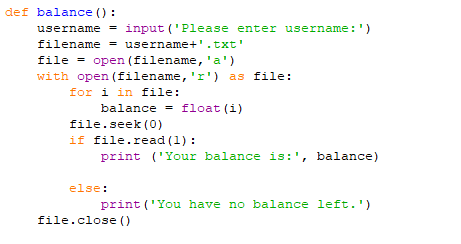

If you open the file in a text editor, you will see Let’s open and examine the structure of the file Plates_output_simple.csv. As you are working, make sure that you save your file opening script(s) to this directory.Make sure that your working directory is also set to the folder home/Desktop/workshops/YourName.Copy the file to your working directory, home/Desktop/workshops/YourName.Locate the file Plates_output_simple.csv in the directory home/Desktop/workshops/bash-git-python.We will work with the practice file Plates_output_simple.csv. Or, when we provide the file name, we can give a complete path to the file. In Spyder, we can do this by setting our current working directory to the folder where theįile is located. In order to open a file, we need to tell Python exactly where the file is located, relative to where Python is currently What you learn in this lesson can be applied to any general text file. Right now, we will practice working with a comma-delimited text file (.csv) that contains several columns of data. Writing files allows us to process our data and then save the output to Understand the difference between the file name, the opened file object, and the data read in from the fileīe able to write output to a text file with simple formattingīeing able to open and read in files allows us to work with larger data sets, where it wouldn’t be possible to type in each andĮvery value and store them one-at-a-time as variables. However, once called writelines() will concatenate the list elements and write them into the file.Be able to open a file and read in the data stored in that file The file object writelines() method expects an iterable (such as our list). Let’s now assume that you have a Python list that you would like to write into a file line by line. With open(r"C:\Temp\mydocument.txt", "a") as f:į.write("\n This text was added using Append.") With open(r"C:\Temp\mydocument.txt", "r") as f: With open(r"C:\Temp\mydocument.txt", "w") as f: Append will insert your text after the existing content of your text file. Hence we typically open files in append mode (“a”). Print('Directory doesn\'t exist, please create the directory first.') Append text to an existing fileĪs mentioned before, the files we created using “w” as access mode will overwrite all existing file contents. With open (dir_path.joinpath(file_name),'w') as f:
Txt write python code#
Print("Directory doesn\'t exist.") Create a file if doesn’t exist with Pythonīelow is a bit more robust version of the code in which we’ll first check if the directory and file paths exists before reading and writing into the file. # replace with your preferred directory and file pathįile_path = os.path.join(dir_path, file_name) # replace with your preferred directory pathį.write("This text is written with Python.")Ī similar implementation using the Python standard library os module (also available earlier than Python 3.4): import os Let’s take a look at the snippet – Note the usage of the pathlib library (available from Python 3.4) that simplifies file object handling in Python. We’ll then use a With context to open the file in Write access mode and append a string to the file. We will first make sure that file directory path is available in your operating system. To create a file under a path different from our working directory, we will have to make a slight change in the way we call the open function. Create a file in a different directory path Note: when opening a file in Write (‘w’) mode, the current file contents will be truncated.

This file will get created under the folder where your Python script is saved.Ĭode: with open("mydocument.txt", mode = "w") as f:į.write("This text is written with Python") The below code will create a file named ‘mydocument.txt’ with write access permissions.

To create text files in Python, we typically use a With block and the open(“filename”, “accessmode”) function.


 0 kommentar(er)
0 kommentar(er)
